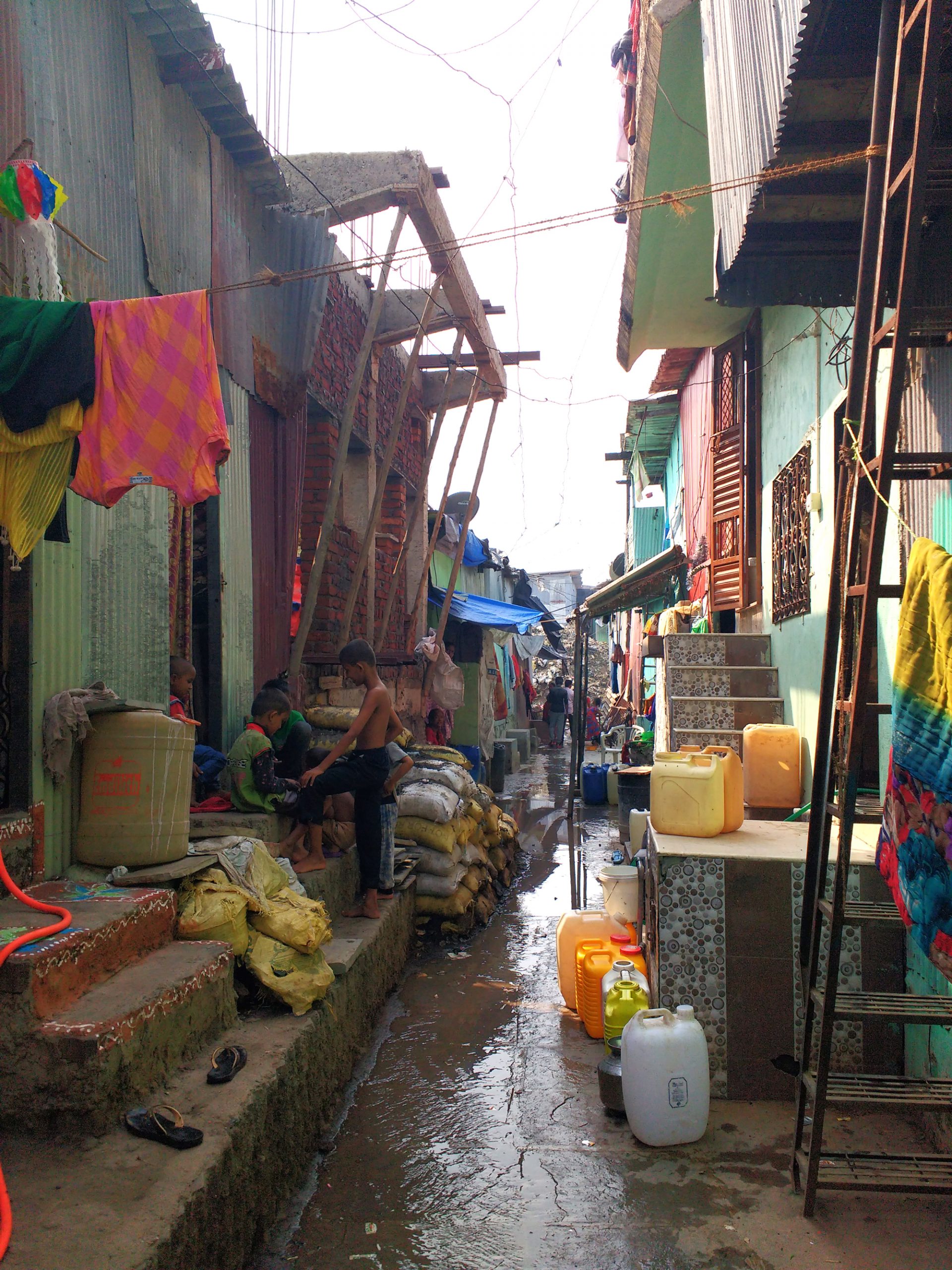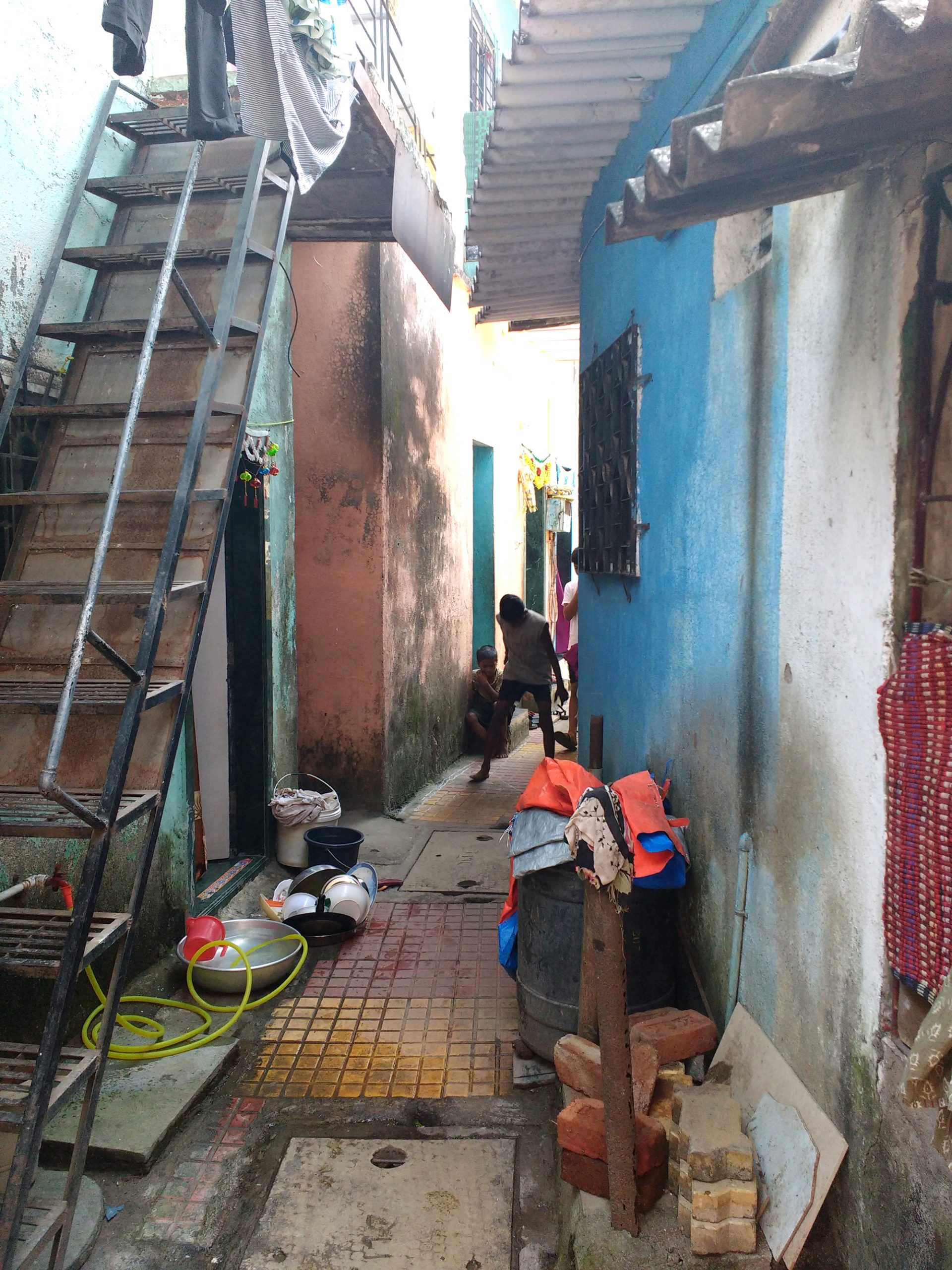The making of informal settlements

The taxi abandoned me at the intersection of the highway and the road leading to the informal settlement. It was a hot summer day. Walking along the wide concrete roads, in unbearable heat, I struggled to find a tree or any kind of shade. After traversing almost two kilometres of asphalt, I finally reached the comfort of the narrow, shaded, unpaved lanes. This is when I learnt the most important lesson: I wasn’t there to improve the settlement, but to learn from it.

I had seen images of this area many times before; but, even with my training as a researcher who advocates the power of informality, I couldn’t go beyond the aesthetic at first sight. It was overwhelming. The mammoth pile of garbage, kids defecating in the open, uncovered drains, narrow lanes, tightly packed small houses; the assemblage of these elements creates an image which is so far from our definition of a liveable neighbourhood that even well-intentioned scholars deem these settlements as failed parts of the city. But a house is so much more than just the four walls: your neighbourhood is much more than the drainage system and the paving. Let me take you on a journey – revealing our prejudices and our limited understanding of the phenomenon of ‘housing’.

Not every informal settlement is a slum. A slum is a physical state, fixed in time. It displays a lack of many of the factors that are considered crucial to a healthy living environment: lack of sewage collection, water supply, toilets, and personal space. Parts of the settlements that I have been studying clearly displayed slum conditions, but the rest of the areas escaped the definition. Certain clusters have successfully prevented the blocking of light and ventilation in the streets abutting their house, through informally agreed-upon codes of extension. Though most of the settlements have no formal access to water or a sewerage system, they do have rudimentary self-built drainage channels, and through informal means are able to procure water. In many cases, the clusters of houses might start off as slums, but over time, with the addition of toilets and upgrading, transform into healthy neighbourhoods.

Not all informal settlers are squatters, either. Squatting is understood as the opposite of ownership, and squatters are often seen as free-loaders. But the majority of residents in informal settlements have either bought the land – or house – from someone, or are in many cases renting. What they lack, though, is formal documentation of their claim of ownership; the subdivision in which their house stands wasn’t part of the formal urban development process, but produced through informal means, and is generally considered illegal. This precarious tenure is, again, not permanent. Many squatter settlements end up acquiring tenure security over time.
The hardships encountered by the residents to get out of slum-like conditions or break the stigma of squatters shouldn’t be overlooked. Many NGOs and academics have justified the use of terms such as ‘slum’ or ‘squatter’ precisely for the way it gives visibility to the settlement dwellers’ fight for rights. But there are others who have argued that to lock them in a fixed category, which they are struggling to escape, is counter-productive, and that it leads to an anti-poor ideology. When slums and squatters get equated with poverty, slum eradication and relocation get legitimized in government policies for the pretext of development.


As Melbourne University professor Kim Dovey points out, “informality is not a condition but a process.” Informal settlements are always under construction. In most of the cases, the informal city is built room-by-room, through incremental extensions whenever the residents have the resources. Sometimes they undertake in-situ upgrading: temporary materials are replaced with more robust materials, and whole settlements get improved with the construction of roads, provision of sanitation, water, and building of public institutions. This is also why the terms ‘slums’ and ‘squatters’ are inadequate: they fail to capture the heterogeneity of the users and their living conditions.

There is an important learning here: What is housing? Housing is not only the process of constructing the built form but is also about building social ties. John Turner, whose influential work in Peru made way for self-help policies of the World Bank, captures it beautifully when he says that housing needs to be seen “as a verb,” and not a noun. Informal settlements are one of the best examples of adaptability and incremental growth. They develop through a bottom-up process and demonstrate a level of community participation that is rarely seen in planned developments. Their morphology is an outcome of the negotiations between the different decision-makers of the settlement.
There are lessons in urban design to be learnt here. Almost all these neighbourhoods are mixed-use, pedestrian-friendly, within walking distance from jobs. They display high-density, low-rise housing, with a high degree of outdoor life in the laneways. Though driven by cramped interior spaces, the house interface allows for activity to spill out of the indoors and creates a lively streetscape; which in turn contributes to public safety through “eyes on the street” as pointed decades ago by Jane Jacobs, author of the seminal book ‘The Death and Life of Great American Cities’. These settlements serve as an exemplary model for contextual response and sustainable living.

Informal settlements have a strong relationship to their geographic location. Since they emerge where the jobs are, the address is a bigger priority than the appearance of the homes. It has been noticed worldwide that, when provided with replacement houses through formal channels, the residents often sell or rent out their homes and return to informal settlements. We should be asking ourselves: Why do people move back here? The alternative provided by the government is generally at the outskirts of the city, uprooting ‘slum dwellers’ from their social and economic connections. The replacement is often in the form of apartment towers which, by their very design, don’t allow flexibility and growth based on changing needs.

Along with replacement housing, governments in many developing countries have been promoting affordable housing schemes by providing access to loans. Mostly, however, they start at a stage that is still out of the reach of the ‘really poor,’ according to World Bank research, keeping recipients stuck in a vicious cycle of debt and poverty.
In many cases, these settlements provide economic opportunities to their residents to upgrade their financial situations in the form of live + work possibilities and rental income. If in the developing countries informal settlements often end up being the primary means of answering the demand for affordable housing, it is because government models are unable to provide the adaptability that informal settlements can achieve. It is important to understand here what affordability is for these residents: it is the freedom to build one’s dwelling at the pace at which one can manage the resources, and the freedom to transform it to accommodate different configurations of activities.

As I walk back to my middle-class, gated community, I am struck by the contrast between the narrow, busy, pedestrian lane without drainage and paving that I just left, and the empty streets lined by parked cars that I am re-entering. I cannot help but wonder which one needs improvement.
Thank you to Ishita for sharing her research, and her photos, with us. Ishita is part of InfUr – Informal Urbanism research hub at University of Melbourne.